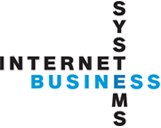End-User Adoption
End-User-Adoption: Change Management, Training and Communication
The Need for Change Management
SharePoint 2010 projects introduce new functionality which is highly significant to the business and users. This investment has been based on the expectation of a return for that investment, either implicitly or explicitly.
A Change Management Process will maximise the ROI of this project by:
- Maximising take-up and usage. The business case would have assumed a particular rate of usage and it is essential that this target be met or, if possible, exceeded.
- Maximising productivity gain by utilising the solutions implemented on the SharePoint platform to their full potential. These solutions, if adopted successfully, will provide a new way of doing business. They will change the way work is performed.
- New ways of doing business will include for example:
- New processes for working as a team
- New processes for accessing and using information and
- New ways of communicating
In order to achieve this we help you undergo a program that carefully:
- Introduces the change
- Explains the change
- Involves stakeholders in the change
- Promotes the change and captures the hearts and minds of the users
- Assists stakeholders through the process of modifying the way they work
- Supports the change
- Commits to change on a go-forward basis
- Comprehensively deals will the many necessary activities in an integrated fashion.
The IBSA Difference: Traditional Project Management practices, Communications Plans and Training Plans will cover only some of the activities needed to be performed. We coordinate these under a single End-User Adoption Plan with a consistent and integrated strategy for achieving the desired ROI.
Services to Assist You:
- End-User Adoption Strategy and Plan
- Stakeholder Analysis
- User segmentation and analysis
- Training
- Communication
- Business Case development and monitoring
- Detailed User Adoption activity programs
- Coaching
- Template materials
- Digital resources (eg Web-based learning tools)
Copyright 1999-2017 IBSA - All rights reserved

